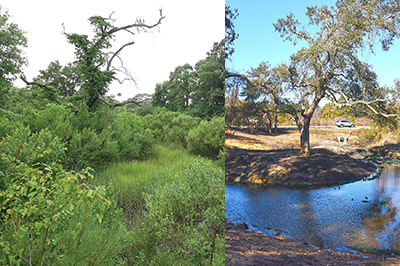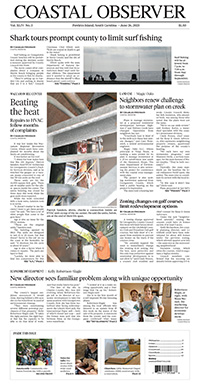Environment
State questions Murrells Inlet water quality measures

Georgetown County says it has the data to show that it has a program to reduce pollution in Murrells Inlet. The lack of data was cited in a state report this spring that found the county’s stormwater program “needs improvement.”
“We’ve done monitoring activities, but we haven’t included them in the report,” said Ray Funnye, the county Public Services director, whose department includes a stormwater division. “It was done in-house, but we’re considering some other options to make sure we don’t get ourselves in this predicament in the future.”
Two citizens groups that have been critical of the stormwater program for lax enforcement say the county has done nothing to try to improve water quality in Murrells Inlet and is using projects that were abandoned years ago to attempt to meet the requirements of its state permits.
“There was something five years ago, but all three projects have been abandoned,” said Gary Weinreich, a retired environmental engineer and a member of Preserve Murrells Inlet.
The state Department of Health and Environment Control conducted an audit of the county program last October. It was the first audit in 10 years although federal guidelines say they should be conducted at least every five years.
The county rated “satisfactory” in 2013. This year, DHEC found deficiencies in one broad area of the county program and on two construction sites where the auditor accompanied a county inspector.
The stormwater program, known as MS4, is an alphabet soup of abbreviations. Its formal name is the “municipal separate storm sewer system.” It drains into the Murrells Inlet estuary, for which there is a TMDL, “total maximum daily load,” established for fecal coliform bacteria. In order to reduce that TMDL, the county must implement and monitor “best management practices,” or BMPs.
To address concerns about the inlet’s water quality, the county participated in a Murrells Inlet Watershed Plan, which was adopted in 2014.
“Although a plan was developed and given to the department, the auditors did not see any documentation that the plan was implemented,” according to the DHEC report.
Although the county’s annual MS4 reports say it has implemented BMPs, “without any sampling data the performance of each BMP may be ineffective. Georgetown County MS4 mush show progress of BMP implementation and performance monitoring within its annual reports,” the DHEC report states.
In the county’s response to the audit, Funnye said the county has done the monitoring and “continues to monitor outfalls that discharge into Murrells Inlet.”
“What we reported to DHEC is that we have implemented a BMP for Murrells Inlet. The data and associated information will be included in future reports,” he said in an interview. “We have provided the analysis.”
Preserve Murrells Inlet and Keep It Green dispute that in their own response to DHEC.
After the watershed plan was adopted, Georgetown County and Horry County, which also borders the inlet, installed some devices that were intended to filter stormwater. It also received a $270,000 federal grant to create a managed wetland at the south end of Business 17 where water drains from west of Bypass 17 into the inlet.
“They had no possibility of significant bacteria reduction,” Weinreich said.
The filters are gone and the managed wetland is now overgrown.
“The county has continued to refer to these three abandoned projects for the past five years in their annual reports as if they represented an ongoing continual effort to improve water quality as required by their permit,” the citizens groups told DHEC.
As for the data, the county’s response to DHEC includes information collected by a volunteer water quality program sponsored by Coastal Carolina University. That isn’t intended to measure progress toward the TMDL requirement, the groups note.
The county also included data from October 2020 collected by Woolpert, a consulting firm. It measured water quality at two sites connected with one of the filters. The consultants recommended additional sampling.
Woolpert currently provides plan review and post-construction inspections for the county stormwater division. Its contract was extended this week for another year.
On the two construction sites, Sunnyside Village and Waccamaw Oral Surgery, both on Highway 707, the auditor came up with 14 deficiencies ranging from a permit not being in its proper place to a spillway that was higher than the dam it was intended to serve to flawed inspections.
Although the county disputed some of the findings, Funnye said, “we need to tighten up and do a better job.”
Weinreich had previously raised concerns about those projects with the county. He said he got no response.
“They’re not outliers,” he said. “We’re thankful DHEC looked into it.”
The DHEC report points out that the goal of the audit is to strengthen the county’s MS4 program.
The citizens groups say one way the county could do that is to make water quality improvements at Murrells Inlet a goal of the natural resources element of the county’s comprehensive plan. That was included in a version approved by the Planning Commission, but later removed by county staff.
The natural resources element is now on hold.
“Due to the county’s inaction, we are now 10 years behind in implementing effective BMPs,” the groups said.




